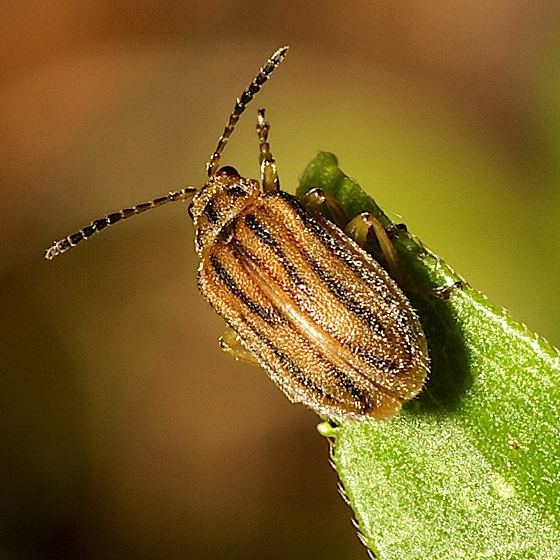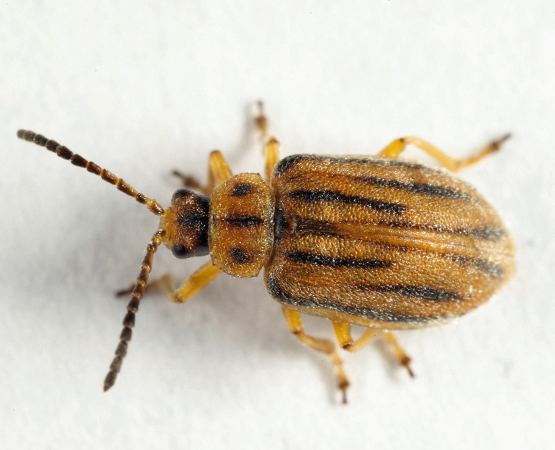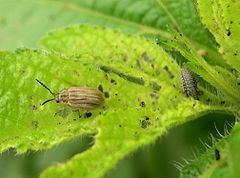Suborder Polyphaga Family Chrysomelidae Order Beetle | Superfamily Chrysomeloidea Rank Species | |
 | ||
Similar Beetle, Annual ragweed, Ambrosia trifida, Epiblema strenuana, Zygogramma suturalis | ||
Ophraella communa, common name ragweed leaf beetle, is a species of beetles belonging to the family Chrysomelidae.
Contents
Distribution

This species is endemic to the Middle and North America (Canada, United States and Mexico) and it has been introduced in Southern Asia and in Europe, where it landed in 2013.
Description
Ophraella communa can reach a length of 3.4–4.1 millimetres (0.13–0.16 in) in males, of 3.9–4.3 millimetres (0.15–0.17 in) in females. The head is yellowish, with dark brown spots at the back. Body is coarsely punctured. Antennae are dark brown. Pronotum is yellowish or pale brown, with three black or dark brown spots. Elytra are yellowish or pale brown and show dark brown longitudinal stripes.
Biology

This species feeds almost exclusively (oligophagy) of leaves and flowers of the family Asteraceae tribe Heliantheae, e.g. sunflowers (Helianthus annuus) and rough cockleburs (Xanthium strumarium), with a marked predilection for Ambrosia artemisiifolia, which is invasive in Europe and Asia.

The eggs are laid on the underside of young leaves of the host plants. The eggs are pear-shaped, with an hexagonal microsculpture. They are at first yellow, but quickly change their color to orange. Before the pupation, the beetles form cocoons on a leaf tip. Pupation lasts one to two weeks. After hatching, the adults remain on their host plants, but later they can migrate up to 25 km within one day.
